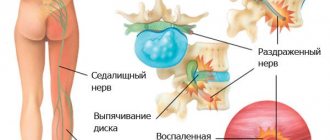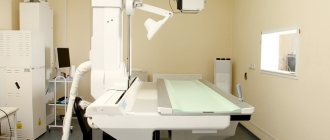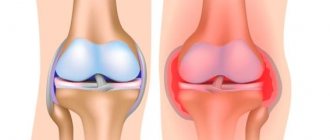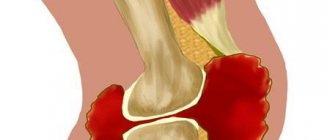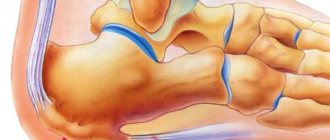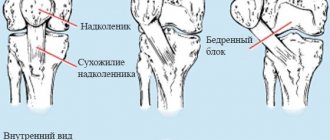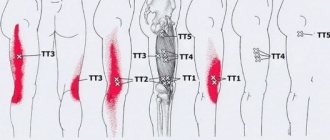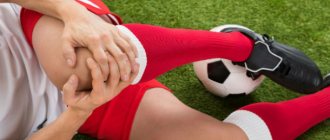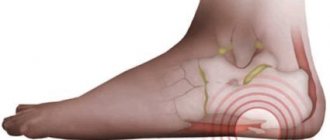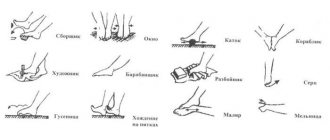The collarbone consists of two paired bones located above the first rib and connecting the upper limbs of a person to the rest of the body. It performs several important functions, providing the necessary range of motion to the arm and transmitting physical impulses from the arms to the axial skeleton. Pain in the collarbone can occur due to injury, but in addition it can be caused by diseases of the internal organs and the musculoskeletal system.
If you have pain under your collarbone or between your collarbones, if the pain is localized on the right or left side, don’t tolerate it! Contact the CELT Pain Clinic, and our specialists will find out the reason why it occurs and prescribe effective treatment. We have modern equipment for diagnostics and treatment, which will definitely help you!
At CELT you can get advice from a specialist algologist.
- Initial consultation – 4,000
- Repeated consultation – 2,500
Make an appointment
Clavicle injuries
A common cause of pain is a fracture, dislocation or subluxation.
The main mechanisms of these injuries:
- blow directly to the collarbone,
- a strong blow to the chest,
- falling on an outstretched arm or on an elbow.
The external signs of a fracture are so typical that it cannot be confused with anything. The pain is sharp, intense, and the collarbone itself is deformed.
Under the influence of muscle tone of the shoulder girdle, its medial fragment, as a rule, moves upward and posteriorly, and the lateral fragment - downward and anteriorly.
The danger of a fracture is not in the injury itself, but in its complications.
Bone fragments can injure the nearby neurovascular bundle, which includes the subclavian artery, vein and nerve. Therefore, in case of a fracture, you should never try to compare clavicular fragments on your own.
The broken collarbone should be immobilized (immobilized) as quickly as possible. An ordinary scarf does not cope well with this purpose. You need a Deso bandage that securely fixes the entire upper limb to the body.
Only healthcare professionals with the necessary skills can apply it.
Therefore, you should not go to the hospital on your own. It is better to call an ambulance to the scene of the injury. Doctors will apply a Deso bandage and transport the victim to a medical facility. Treatment of a clavicle fracture is only surgical by osteosynthesis (passing a fixing pin through the bone canal).
In children, the diagnosis of a fracture can be difficult because it proceeds like a green branch - the bone breaks while the periosteum is preserved, and there is no displacement of the fragments. In this case, radiography helps determine the cause.
Dislocations most often occur in the acromion joint. In this case, both ligaments securing the joint are torn. If one of them is intact, they speak of subluxation. Dislocation of the acromial joint is characterized by the so-called key symptom.
When pressing on the protruding acromial end of the clavicle, it returns to its normal position. But if you stop the impact, it moves again. Dislocations of the sternoclavicular joint occur much less frequently. In this case, the sternal end of the bone can move upward, posteriorly or anteriorly.
Clavicular dislocations often occur in athletes. Conventional x-rays are sufficient to diagnose these injuries. Depending on the severity of the displacement, conservative treatment is carried out (immobilizing plaster cast), or surgery - plastic surgery of the ligaments with subsequent fixation of the joint.
Causes of pain in the clavicle joint
Pain in the collarbone is caused by pathologies in the joint itself or other organs. Most often there is a combination of several pathologies. Among the most common causes of discomfort in the sternoclavicular or liver joints are the following:
- Clavicle injuries. Such pathologies include bruises, partial or complete fractures of joint bones, and rupture of ligaments.
- Arthritis of the shoulder joint. The disease is characterized by an inflammatory process that occurs as a result of degenerative changes in the affected joint. Since the shoulder joint is located close to the collarbone, its deviations cause pain to radiate to neighboring areas.
- Arthrosis of the shoulder. The disease is caused by wear and tear of cartilage and bone tissue as a result of excessive physical activity or physiological aging of the body.
- Humeroscapular periarthritis. As a result of this rare disease, the periarticular tissues and muscles are affected, but the joint itself is not affected.
- Osteomyelitis. When this pathology occurs, bone inflammation occurs. The disease is characterized by rapid development, the advanced form of which leads to the death of the patient.
- Myositis. This disease is difficult to diagnose, since it affects the muscles of the collarbone, and muscle pain is difficult to distinguish from other pathologies. This requires additional diagnostic measures.
- Diseases of internal organs. Pathologies of the stomach or pancreas cause pain in the left collarbone.
WHEN SHOULD YOU BE CONCERNED?
Osteoarthritis or arthritis of the clavicular bone is a form of inflammation caused by wear and tear of the intra-articular cartilage. The latter is possible due to natural aging, autoimmune diseases, infections or injuries. The body signals about pathology more than clearly:
- “point” pain occurs associated with raising your arms up, trying to draw a circle with your hand from front to back;
- the person, without noticing, restrains the activity of the arm connected to the affected clavicular bone;
- often in patients with arthritis there is a feeling that the bone will disintegrate into small parts during movement;
- due to the specific location of the clavicle bone, its arthritis is often accompanied by prominent swelling, redness, weakness, fever and enlargement of nearby lymph nodes.
What is required to recognize pathology?
Such signs of arthritis cannot be left unattended. How to limit the treatment of clavicular pain with analgesics. Arthritis is one of the group of inflammatory reactions that not only do not go away without treatment, but also progress rapidly.
Due to the proximity and small surface of the clavicular bone, there is a high risk of developing erosion, damage to the junction with the scapula, and bone wear (increasing its fragility). Additionally, abscesses may develop and purulent foci may appear. Against this background, toxicosis, inflammation of soft tissues, and infection of adjacent areas often develop.
A positive factor is that the clavicular bone structure is clearly visible on x-rays. This method is the basis for recognizing pathology (although visual signs of arthritis affecting the clavicle bone are quite informative).
To assess the affected area and verify the provoking disease (polyarthritis, arthritis of the humerus or scapula, spondyloarthritis, lordosis, kyphosis, spondylosis, osteophytes), contrast X-rays (arthrography) may be required. MRI and ultrasound - to study the spread of the inflammatory process into soft tissues.
Due to diseases of internal organs
In this case, the pain is not associated with the collarbone, and is caused by damage to the nerves of the brachial plexus, which includes the subclavian nerve.
The most common cause is cervical osteochondrosis, in which the roots of the cervical plexus are pinched between the four lower cervical vertebrae.
This will be accompanied by other symptoms: dizziness, pain in the neck, shoulder joint, headache.
To diagnose cervical osteochondrosis, radiography or computed tomography of the cervical spine is used. Treatment includes:
- Wearing the Shants immobilizing cervical collar
- Nonsteroidal anti-inflammatory drugs (NSAIDs)
- After the pain subsides outside the exacerbation phase - physical procedures, physical therapy, massage of the neck and collar area.
Shoulder periarthritis is an inflammation of the capsule of the shoulder joint, nearby ligaments and tendons. Aches in the shoulder joint with this pathology can radiate to the collarbone.
The causes of brachial periarteritis are varied. These are previous injuries, cervical osteochondrosis, metabolic disorders, and much more. Treatment is based on NSAIDs and physical therapy.
The phrenic nerve originates from the cervical plexus. Along the way to the diaphragm, it gives off its branches to various anatomical zones, incl. and to the clavicle area and the nearby sternocleidomastoid muscle.
Irritation of the diaphragm in diseases of the abdominal organs may be accompanied by projection pain.
Quite often, abdominal pain with diseases of the gallbladder and liver radiates to the right collarbone. In this case, the so-called Phrenicus symptom - pain when pressing on the supraclavicular area between the legs of the sternocleidomastoid muscle.
With pathology of the stomach and pancreas, it can radiate to the left collarbone. Angina pectoris and myocardial infarction often occur with bursting or burning retrosternal pain, radiating to the left arm or left collarbone.
Sometimes there is no pain at all in the heart, but it worries in the collarbone. In this case, only an ECG can establish the truth. Irritation of the phrenic nerve with the appearance of pain is often observed in acute pulmonary pathology (pneumonia, pleurisy). Of course, eliminating clavicular pain in these cases should not be an end in itself. You need to treat the underlying disease, and the pain will go away on its own.
Main symptoms
Associated symptoms play a huge role in differential diagnosis. The patient himself may suspect that he has a particular disease. What manifestations occur?
Firstly, pain of varying degrees of intensity. We can talk about mild pain or significant discomfort in the collarbone area. If the syndrome appears in the evening, worsens at night and goes away before noon, we are most likely talking about arthritis. Aching pain that persists constantly and intensifies after physical activity is more typical for other conditions, such as arthrosis, periarthritis, etc.
Secondly, redness of the bone or nearby structures. May occur with arthritis.
Thirdly, swelling of the collarbone. It occurs due to the release of a large amount of intercellular fluid into the site of inflammation.
Fourth, a feeling of weakness in the affected arm. Often the patient cannot sufficiently control his own limb.
Fifthly, impaired motor activity. Feeling of stiffness and discomfort. This symptom is described by patients as “a tight sleeve that does not allow you to move your arm” and everything in the same spirit. Such a manifestation should alert you: we may be talking about arthritis in an advanced stage.
In case of injuries, the motor activity of the arm in the shoulder is significantly reduced, severe pain is observed, crepitus (crunching) on palpation is possible, and a change in the anatomical shape of the clavicle.
Based on these symptoms, the doctor will be able to make a clear diagnosis. Self-diagnosis is not recommended, but knowing which symptoms are the most dangerous, the patient can react in time and consult a specialist. This is the most rational option.
If the collarbone on the left or right begins to hurt, you need to determine the symptoms of the disease. Naturally, the main symptom will be pain. They should be given special attention. Pain happens:
- shooting, aching, stabbing or pulling;
- paroxysmal/prolonged;
- strong, moderate or weak;
- with a location only in the collarbone or be given to nearby places.
It is also important to observe whether the pain increases while breathing or moving a limb.
The cause of discomfort in the collarbone can be various ailments, so the manifestations vary. The occurrence of a symptom on the left or right depends on the location of the pathology. Pain syndrome is accompanied by the following symptoms:
- limitation of motor function of the hand,
- swelling of the collarbone and nearby joints,
- weakness in the affected limb,
- redness of the skin in the area of the sore collarbone,
- crunch on palpation,
- numbness of the affected limb.
Pain intensity depending on the pathology
| Disease | Nature of pain | Time of occurrence |
| Injury | May be aching or intensely cutting with a complete fracture | For minor injuries, it manifests itself when raising an arm or trying to make rotational movements with a limb. |
| Arthritis | Acute pain syndrome occurs throughout the body | Nighttime manifestations of this symptom are typical. |
| Arthrosis | At the initial stage, the discomfort is minor | Occurs during physical activity |
| Periarthritis | Acute pain is localized in the shoulder, but the neck or collarbone may also hurt | Movement of the affected limb is limited and increases in the absence of therapy |
| Osteomyelitis | The pain is aching in nature | The feeling of discomfort is constant and increases with movement of the affected limb. |
| Myositis | Sharp turns of the hand cause increased pain in the clavicle muscles |
- Firstly, pain of varying degrees of intensity. We can talk about mild pain or significant discomfort in the collarbone area. If the syndrome appears in the evening, worsens at night and goes away before noon, we are most likely talking about arthritis. Aching pain that persists constantly and intensifies after physical activity is more typical for other conditions, such as arthrosis, periarthritis, etc.
- Secondly, redness of the bone or nearby structures. May occur with arthritis.
- Thirdly, swelling of the collarbone. It occurs due to the release of a large amount of intercellular fluid into the site of inflammation.
- Fourth, a feeling of weakness in the affected arm. Often the patient cannot sufficiently control his own limb.
- Fifthly, impaired motor activity. Feeling of stiffness and discomfort. This symptom is described by patients as “a tight sleeve that does not allow you to move your arm” and everything in the same spirit. Such a manifestation should alert you: we may be talking about arthritis in an advanced stage.
Based on these symptoms, the doctor will be able to make a clear diagnosis. Self-diagnosis is not recommended, but knowing which symptoms are the most dangerous, the patient can react in time and consult a specialist. This is the most rational option.
How to treat shoulder and chest pain under the collarbone?
Before treating shoulder pain under the collarbone, it is necessary to conduct a differential diagnosis and identify the potential disease that causes it. Already during the initial examination, the doctor will be able to make a preliminary diagnosis. So, if pain appears under the collarbone when you press on certain points of its attachment to the sternum or scapula, then there is a high probability of violating the integrity of the joint capsule. In this case, pain can be relieved if their integrity is restored. A chiropractor or osteopath can help in this matter. Then a specialist in kinesiotherapy and therapeutic exercises will strengthen the muscle frame and prevent relapse of the disease.
If chest pain under the collarbone is caused by cervical osteochondrosis and its complications in the form of protrusion and hernia, then traction traction is sufficient for the initial relief of the attack. This procedure eliminates compression of the radicular nerves. The patient experiences a significant improvement in his condition. However, this is not a complete treatment. In the future, it is necessary to complete the entire course of therapy, developed individually by a chiropractor or neurologist.
This will allow you to completely heal the cervical spine, remove pain under the collarbone and regain freedom of movement.
It is not recommended to treat such conditions at home without medical help. First of all, you will not be able to independently find out the cause of the pain under the collarbone. Accordingly, the treatment may be completely wrong and only cause harm to your health. Don't risk it. Contact experienced specialists for an appointment.
How to help before consulting a doctor?
If the pain syndrome cannot be eliminated, then it can be relieved with non-steroidal anti-inflammatory drugs, such as Ibuprofen, Diclofenac. The affected limb is immobilized by tying. To do this, use a scarf or piece of fabric. In this position, the patient is taken to a medical facility for further therapy.
Pain specialist, neurologist
6 years experience
Make an appointment
Pain treatment specialist, anesthesiologist-resuscitator, head of the Pain Clinic, candidate of medical sciences
16 years of experience
Make an appointment
Diagnostic measures
Diagnostic measures begin with the selection of a specialized specialist. The path to cure begins with a visit to a surgeon or therapist (if it is currently impossible to visit a surgeon in a clinic). They will help you decide on diagnostic tactics and refer you to the right doctor. The specialized specialist is an orthopedic doctor.
Depending on the type of pathology, you may need to consult a rheumatologist or urologist. Then treatment and diagnosis are carried out by these doctors in tandem. At the initial appointment, the doctor will collect an anamnesis (find out who was sick and what in the family, what the patient himself was and is sick with, etc.), and will also clarify the nature of the complaints and their intensity.
Then comes the turn of physical examination (palpation) and visual assessment of the collarbone and shoulder joint. In combination, this is enough for the doctor to decide on an approximate diagnosis. To confirm (verify) or refute hypotheses, the doctor sends the patient for instrumental studies. Among which:
- X-ray of the clavicle and shoulder joint. Makes it possible to assess the condition of bone structures. Allows you to identify both arthritis and trauma, as well as osteomyelitis. Considered the most effective study in combining accessibility and information content
- MRI or CT diagnostics. These are the most informative studies, allowing the doctor to obtain the most detailed images of bones and surrounding structures. These studies do not have the disadvantages of x-rays: all structures are visualized: both bones and soft tissues.
- Ultrasound of the shoulder joint. Allows you to examine the internal state of the joint capsule.
- Arthroscopy. It is not used very often. Consists of an endoscopic examination of the inside of the joint. It is considered one of the most informative surveys.
- Puncture of the articular cavity. Prescribed for infectious joint damage to determine the type of pathogen.
These studies are sufficient to make a correct diagnosis.
To make a preliminary diagnosis, the doctor interviews and examines the patient. Since each pathology has its own symptoms, the clinical picture in most cases indicates the direction of further research. Palpation allows you to determine the intensity and localization of pain. To determine an accurate diagnosis, additional studies are used such as:
- radiography,
- Ultrasound,
- CT or MRI,
- arthroscopy,
- general blood and urine analysis.
Diagnostic measures begin with the selection of a specialized specialist. The path to cure begins with a visit to a surgeon or therapist (if it is currently impossible to visit a surgeon in a clinic). They will help you decide on diagnostic tactics and refer you to the right doctor.
The profile specialist is an orthopedic doctor. Depending on the type of pathology, you may need to consult a rheumatologist or urologist. Then treatment and diagnosis are carried out by these doctors in tandem. At the initial appointment, the doctor will collect an anamnesis (find out who was sick and what in the family, what the patient himself was and is sick with, etc.
• X-ray of the clavicle and shoulder joint. Makes it possible to assess the condition of bone structures. Allows you to identify both arthritis and trauma, as well as osteomyelitis. It is considered the most effective study in combining accessibility and information content.
• MRI or CT diagnostics. These are the most informative studies, allowing the doctor to obtain the most detailed images of bones and surrounding structures. These studies do not have the disadvantages of x-rays: all structures are visualized: both bones and soft tissues.
• Ultrasound of the shoulder joint. Allows you to examine the internal state of the joint capsule.
• Arthroscopy. It is not used very often. Consists of an endoscopic examination of the inside of the joint. It is considered one of the most informative surveys.
• Puncture of the articular cavity. Prescribed for infectious joint damage to determine the type of pathogen.
What is the difference between pain under the left and right collarbone?
It is important to understand that pain under the left collarbone in some cases can be associated with myocardial diseases. These are angina pectoris, coronary heart disease, atherosclerotic lesions of the coronary blood vessels, valve disease, myocardial infarction, etc. Also, false pain under the left clavicle can occur with the cardiac type of vegetative-vascular dystonia. therefore, if such a symptom appears, you should immediately contact your doctor and ask for a referral for an ECG.
This examination will exclude organic, vascular and neurological damage to the heart muscle. Next, you should consult a neurologist regarding the diagnosis of vegetative-vascular dystonia. And only after this should you look for pathology of the musculoskeletal system (arthrosis, arthritis, deformity, traumatic damage to the acromial or sternal joint).
The first difference between pain under the right collarbone is the exclusion of vascular and cardiac pathology. When such a symptom appears, you can immediately begin diagnosing diseases of the bone and cartilage, articular and spinal structures. It is important to exclude the following pathologies step by step:
- arthritis of the sternoclavicular or acromioscapular joint (manifested by severe pain on palpation, inflammation and swelling of the joint capsule);
- arthrosis of similar joints (manifested by a characteristic crunch when moving, pain on palpation, limited mobility in the shoulder joint);
- habitual dislocation of the collarbone (often occurs in people who are accustomed to actively gesturing with their hands during an emotional conversation; the displacement of the collarbone is visible to the naked eye in the form of a deformation of the chest in this area);
- inflammation of the lymph nodes;
- rheumatism, inflammation of joints and bone tissue;
- bone tuberculosis and other dangerous infections.
Only an experienced doctor can detect the exact cause of pain under the collarbone. Already during the collection of anamnesis and the initial examination, he will be able to make a preliminary diagnosis and prescribe additional examinations. Do not waste time, do not engage in self-diagnosis and treatment. Sign up for a free initial consultation with our orthopedist.
Collarbone hurts: treatment
If the collarbone hurts, it is not the syndrome itself that is subject to treatment, but the original source of pain. As a rule, conservative treatment is sufficient; surgical intervention is resorted to in extreme cases and only when indicated. There are several indications:
- The need to replace the affected joint (prosthetics).
- The need to restore the anatomical shape of the clavicle (for fractures and other injuries).
Conservative therapy involves treatment with medications, orthopedic treatment, and physical therapy.
• Non-steroidal anti-inflammatory drugs. • Analgesics (prescribed to relieve pain). • Muscle relaxants (help eliminate muscle hypertonicity, which directly affects pain). • Antispasmodics. Help relieve pathological spasm of surrounding muscles.• In extreme cases, steroid drugs are indicated to relieve inflammation.• Chondroprotectors (to protect joints from destruction).
The doctor selects specific names. Self-medication is strictly prohibited.
Orthopedic treatment involves wearing a plaster cast for injuries. In addition, for sprains, wearing an elastic bandage is recommended.
Physiotherapy is prescribed during the period of remission of the underlying disease. Procedures are also selected only by a doctor and strictly according to indications.
Our Pain Clinic uses modern methods of treating collarbone pain, the choice of which depends on the cause of its occurrence.
If it occurs due to a fracture, a plaster cast is applied. A complicated fracture accompanied by displacement requires the application of a special splint.
If the neurovascular bundle is damaged due to injury, surgical intervention is performed. When applying bandages and splints, as well as when performing the reduction of a dislocated collarbone, painkillers are used.
Systemic therapy is also aimed at relieving pain. Medicines can be given in the form of tablets or intravenous injections.
Our specialists develop a treatment regimen that takes into account the cause of pain, the intensity of pain symptoms, and the patient’s individual indications and contraindications. Thanks to this, the treatment is successful, and our patients return to their normal lifestyle!
Therapy for discomfort in the collarbone is based on the reasons that provoked the disease. To relieve pain, medications with analgesic and anti-inflammatory effects are used.
If the patient's condition worsens due to an exacerbation of the disease, he may be prescribed:
- analgesic to minimize pain (Ketorol, Baralgin);
- NSAIDs that relieve swelling and compression (Diclofenac, Meloxicam);
- a muscle relaxant to relieve muscle spasms (Sirdalud);
- vitamin B (helps reduce pain intensity, has a positive effect on the conduction of nerve impulses).
Diclofenac
The patient can use painkillers in any dosage form. It is advisable to use injections in situations where you need to quickly relieve pain. A warming gel with an analgesic effect can be applied externally to the affected area. The tablet form copes well with symptoms of moderate intensity.
The use of physiotherapeutic procedures, massage, acupuncture and manual therapy will reduce the manifestation of pain and speed up the recovery of not only the diseased area, but also the entire body. Water aerobics and swimming won't hurt.
1) The need to replace the affected joint (prosthetics).
2) The need to restore the anatomical shape of the clavicle (for fractures and other injuries).
• Anti-inflammatory non-steroidal origin.
• Analgesics (prescribed to relieve pain).
• Muscle relaxants (help eliminate muscle hypertonicity, which directly affects pain).
• Antispasmodics. Helps relieve pathological spasm of surrounding muscles.
• In extreme cases, steroid medications are indicated to relieve inflammation.
• Chondroprotectors (to protect joints from destruction).
Rehabilitation.
Rehabilitation measures are aimed at speedy recovery of the patient after the injury.
- A mandatory set of exercises to develop an injured collarbone (selected by a traumatologist, taking into account the type of dislocation and the complexity of the injury)
- Physiotherapeutic treatment (UHF therapy, therapeutic massage, acupuncture, electrophoresis)
- Balanced nutrition (including foods containing essential microelements and vitamins)
The recovery period is approximately 1.5-2 months, after which normal performance returns.
If, in case of a dislocated collarbone, you do not seek help from a specialist in time or do not follow his recommendations, then the consequences of such an attitude may be damage to nerves, blood vessels and dysfunction of the hand.
Prevention
Prevention if your collarbone hurts consists of following several recommendations.
1) It is strictly forbidden to overcool. Bones, joints and muscle fibers do not tolerate low temperatures. This is fraught with the development of myositis and infectious arthritis.
2) It is important to sanitize all sources of possible inflammation in a timely manner. This will help avoid such a terrible disease as osteomyelitis.
3) At the first suspicion of pathology of the collarbone and shoulder joint, it is recommended to immediately go to the doctor.
https://www.youtube.com/watch?v=d0wCEOiV6Q4
4) You need to undergo preventive examinations with a surgeon once a year.
5) Under no circumstances should drugs of steroid origin be used uncontrolled. If necessary, you should visit an orthopedist every six months.
Attention to health is the key to safety.
To prevent the development of pain and discomfort in the collarbone, it is recommended to follow a few simple rules:
- protect the body from hypothermia and overheating;
- correctly distribute the load on the spine;
- Do not lift more than 10 kilograms without prior preparation;
- fully cure viral and infectious diseases;
- Visit a doctor at the first discomfort in the collarbone.
It will not be superfluous to switch to a properly balanced diet, give up nicotine and alcoholic beverages, and perform daily gymnastic exercises.
Prevention if your collarbone hurts consists of following several recommendations:
- It is strictly forbidden to overcool. Bones, joints and muscle fibers do not tolerate low temperatures. This is fraught with the development of myositis and infectious arthritis.
- It is important to sanitize all sources of possible inflammation in a timely manner. This will help avoid such a terrible disease as osteomyelitis.
- At the first suspicion of pathology of the collarbone and shoulder joint, it is recommended to immediately go to the doctor.
- It is necessary to undergo preventive examinations with a surgeon once a year.
- Under no circumstances should steroid drugs be used uncontrollably. If necessary, you should visit an orthopedist every six months.
